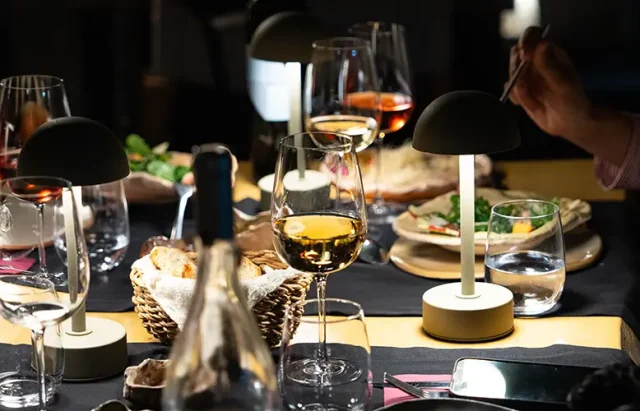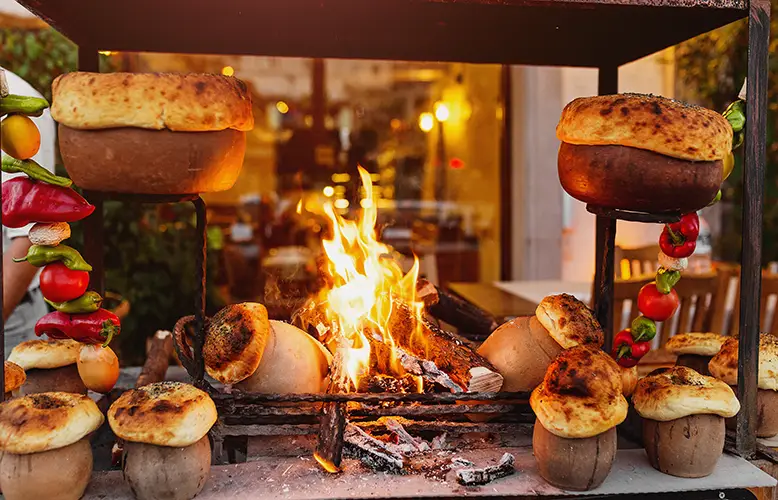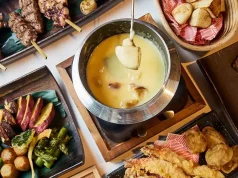
Cappadocia’s world-class cuisine is receiving official recognition in the Michelin Guide’s 2026 restaurant selection, to be announced alongside selections in İstanbul, İzmir and Muğla on December 4, 2025.
One of Türkiye’s top cultural destinations, Cappadocia’s museums and archaeological sites welcomed over 4.37 million visitors in 2024. This unparalleled region captivates travellers with its cave hotels, subterranean cities that once sheltered early Christians, and the iconic sunrise hot air balloon ride over magical fairy chimneys ‒ a picturesque scene that’s trending online and on social media. Last year, this awe-inspiring experience soared to new heights with a record 933,000 passengers taking to the skies in hot air balloons.
Beyond its visual charms lies another treasure: an exceptional culinary heritage, deeply rooted in Turkish and Anatolian traditions and local terroire.

Discover Cappadocia’s Culinary Specialities
Testi Kababı – A Culinary Staple No visit to Cappadocia is complete without experiencing testi kebabı. Served straight from a blazing-hot clay pot that’s cracked open at the table, this slow-cooked meat stew fills the air with an irresistible aroma. Named after the clay vessel it’s prepared in, testi kebabı is as much a visual spectacle as it is a culinary delight; a moment often shared on social media, but even more unforgettable in person.
The region’s love for slow cooking doesn’t stop there. Meats prepared in traditional tandır ovens offer equally rich, tender flavours, while Cappadocia’s distinctive soups include Ürgüp tarhanası, made from yogurt, yarma (cracked wheat), and chickpeas, and tandır soup, which is cooked to perfection in traditional tandır (tandoor) ovens.
A local treasure, Kayseri mantı, impresses with its delicate craftsmanship. These tiny dumplings – so small that 40 can fit on a single spoon – are topped with creamy yogurt and melted butter infused with fragrant Turkish spices, delivering a burst of flavour in every bite.
Other local specialities include kayısı yahnisi, a sweet-savoury blend of dried apricots and meat simmered over a wood stove; zerdeli pilav, a fragrant rice dish infused with grape molasses, almonds, and raisins; stuffed quince filled with ground meat, nuts, and spices; and ağpakla, a clay-pot stew combining white beans and tender meat.

Dessert lovers will also find a feast of tempting options: incir yağlaması (figs simmered in butter), a silky pumpkin dessert, köftür (grape infused Turkish delight), kuru kaymak (dried clotted cream) drizzled in organic honey, and dolaz (a flour halva with butter). Of course, no Turkish meal is ever complete without baklava. In Cappadocia, the Ürgüp-style Damat Baklava is every bit as unforgettable as the region’s breathtaking views.
Cappadocia Wines – A Tradition Perfected Over Centuries
Winemaking in Cappadocia dates back to the first Christian monks, a legacy still felt when visiting the region’s ancient churches and underground cities. The abundant sunshine and fertile volcanic soil create ideal conditions for growing grapes. Today, local varieties such as Öküzgözü, Kalecik Karası, Boğazkere, and Narince thrive, along with the celebrated Emir – a crisp, mineral-rich white wine that captures the essence of Cappadocia’s terroire.





